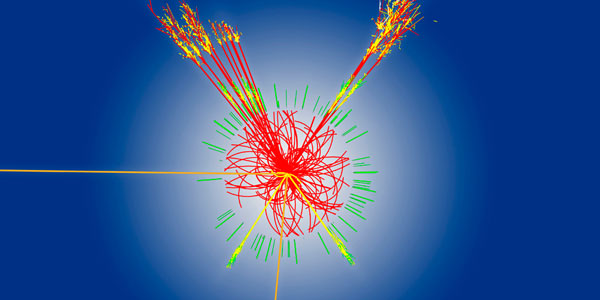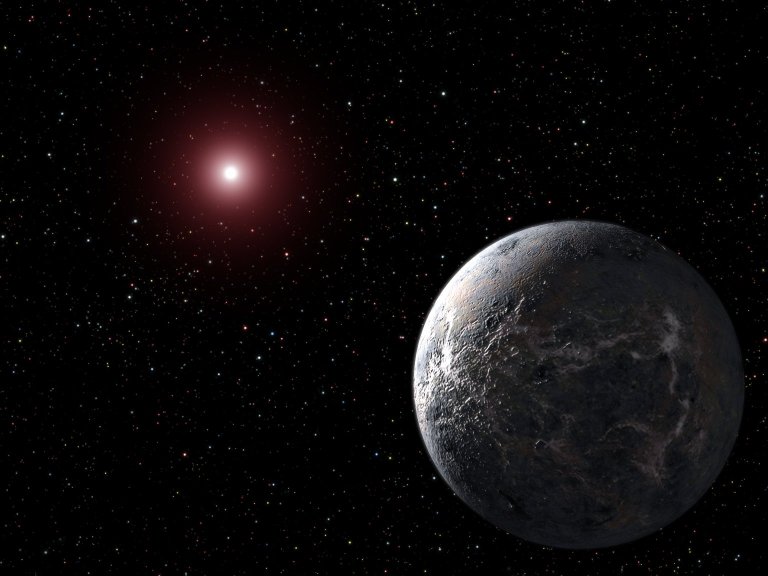Unraveling the Universe One God Particle at a Time
What is the God Particle and Why Should I Care?
Dr. Michael T. Gamble
[main image: the ATLAS experiment]
So much sound and fury over the Higgs Boson, signifying what? A complete understanding of the fundamental constituents of the world in which we live? Of the universe of which we are an integral part? No … and yes.
High-energy physicists at CERN, the European Center for Nuclear Research, announced this week they are closer than ever to detecting the apparently hallowed boson — or possibly it is called God Particle merely for mass consumption. Its quantification would at once provide breathtaking insights into the infinitesimal domain affecting Earthly life and to the composition of the entire universe, a broad range, indeed.
Rewards of Basic Science
This is basic science at its best, the unraveling of the underpinnings of the thing, matter, in this case. The payoff is understanding the whys and wherefores of how particles come to be endowed with mass. And when mass teams up with gravity, watch out, literally. An apple falls to Earth because gravity, a force centrally directed toward the Earth’s core, acts on mass, and on mass alone. We all owe a great debt to mass. In hydroelectric power plants, gravity acts on the mass of water spilling over the dam and pulls it downward, turning the turbines.
Humans don’t float away into space, as in Frank in Kubric’s “2001: A Space Odyssey”, because the Earth’s gravity acts on our body mass. Yes, mass is directly proportional to weight, the product of mass multiplied times the Earth’s gravitational acceleration. Cheer up, on Mars you would weigh about 60 percent less!
Standard Model Confirmation and Extensions
The best description of the nature of matter and how it interacts with itself that scientists have devised is codified in the so-called standard model (SM) of particle physics. The Higgs Boson is encompassed by the SM and would fit perfectly, once detected, as it is the sole remaining undetected/unquantified particle prophesized by SM devotees.
Of greater import than completing the equivalent of a prestigious stamp collection for high-energy physicists, quantifying the Higgs Field, the modality via which mass is apportioned, would enable more of the principal forces observed in nature to be unified, mutually describable in a set of complete equations.
Electricity and magnetism have long been codified in the Maxwell equations. Quantification of the Higgs Field would enable a separate phenomenon, nuclear beta decay, also called the nuclear weak force, to be unified with the forces of electricity and magnetism and elaborated in electro-weak equations.
While the Higgs Boson remains unquantified, narrowing the range of its mass to between 114.4 GeV and 131 GeV, according to CERN scientists, is meaningful news. Some years ago the Higgs was thought to be as massive as 500+ GeV, an energy regime unreachable by the LHC, whose peak energy is closer to 450 GeV.
It appears that it is only a matter of time to determining the mass of the God Particle. And although Einstein’s grand unification vision, a single set of equations describing all of the fundamental forces including gravity, will still be unrealized, I, for one, will celebrate by eating ice cream. When talking mass, every kilogram counts.
>>>
About Dr. Michael T. Gamble: Dr. Gamble is a former staff member of the physics division of the Los Alamos National Laboratory, where he researched directed-energy devices such as terawatt laser systems. He was also a senior manager within the Gammas, Electrons, and Muons detector collaboration at the Superconducting Super Collider. Gamble is the author of “Zeroscape,” a high-tech thriller. He holds degrees in nuclear and mechanical engineering, and was a postdoctoral Fellow at the Massachusetts Institute of Technology.





